UNDER THE SKIN: FORMULA 4 – PRIME NUMBER?
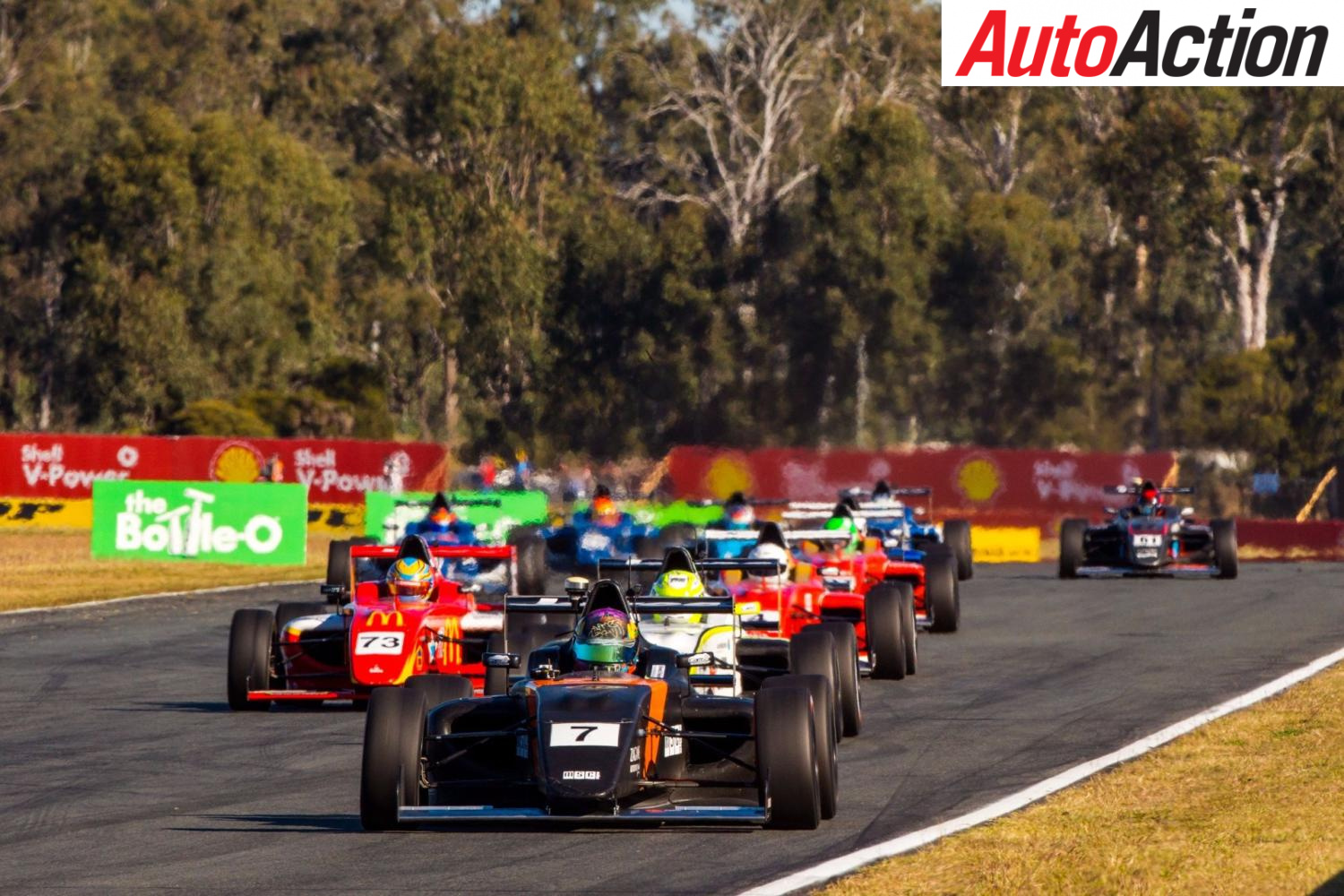
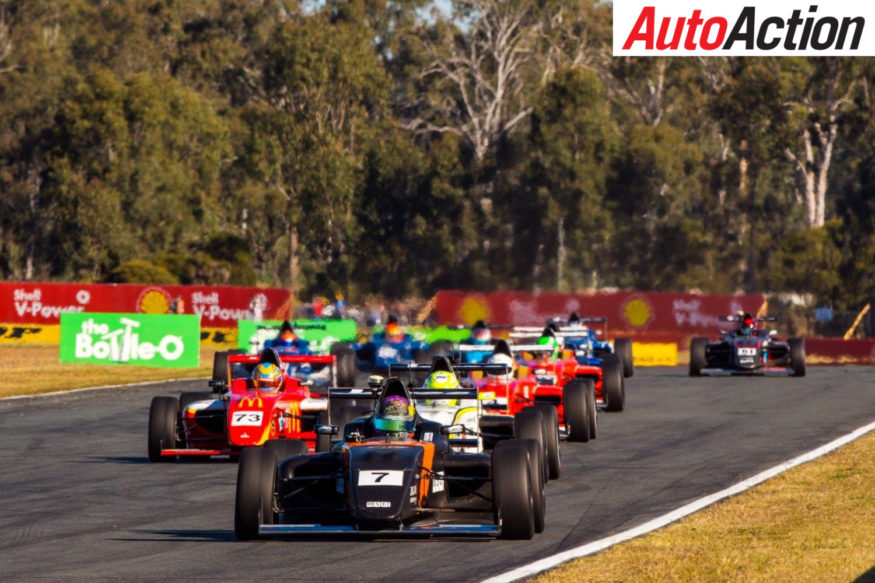
Under the Skin of Formula 4
Formula 4 has been the talk of motor since it first appeared in 2015. In its third season the grids are still half the size of Formula Ford’s – but the cars themselves are well worth a look

Formula 4 is run all over the world
IT IS probably fair to say that few categories have provoked as much discussion in the Australian motor racing landscape over the last 20 years as Formula 4.
Since it was announced that it would become the new entry-level open-wheeler category for the sport in this country there have been some positives and a lot of negatives, with strident views on both sides. It has been either a massive waste of time and money or has put Australian motor racing on an even footing with the rest of the world.
There does not appear to be a lot of ‘middle ground’ in any discussion about the latest slicks-and-wings category to come down under.
AA has deliberately waited to see what would happen in F4, as the category took hold and evolved. It is still evolving; there have been substantial changes to the class in the last two years, if not to the cars themselves then to the structure by which F4 is conducted.
The most obvious change has been to one of the most controversial aspects of the category. But we will get to that later.
First things first. The FIA announced the Formula 4 concept in 2013, to address the growing number of ‘spec’ open-wheeler categories around the world, some of which had manufacturer support, some of which did not. The plan, which came from the FIA Single Seater Commission headed at the time by Gerhard Berger, was that there would be a common set of regulations around the world for the category.
(The Single Seater Commission is now headed by Stefano Domenicali, the boss of Lamborghini. CAMS President Andrew Papadopoulos also sits on that Commission.)
The FIA plan was that various ASNs would adopt an F4 class, with a common chassis supplier and one for the engines, to cater for drivers 15 years and older, with the cost of cars capped at at a pre-determined level, depending on the nation’s currency.
By the end of the year CAMS has committed to the class, shortly after confirming that the national championship status of Formula Ford would end. Twenty cars were ordered, and in July 2015, 13 of them took to the track at Townsville to start a new era in open-wheeler racing. Will Brown won the first Australian F4 race, from Nick Rowe and Luis Leeds.
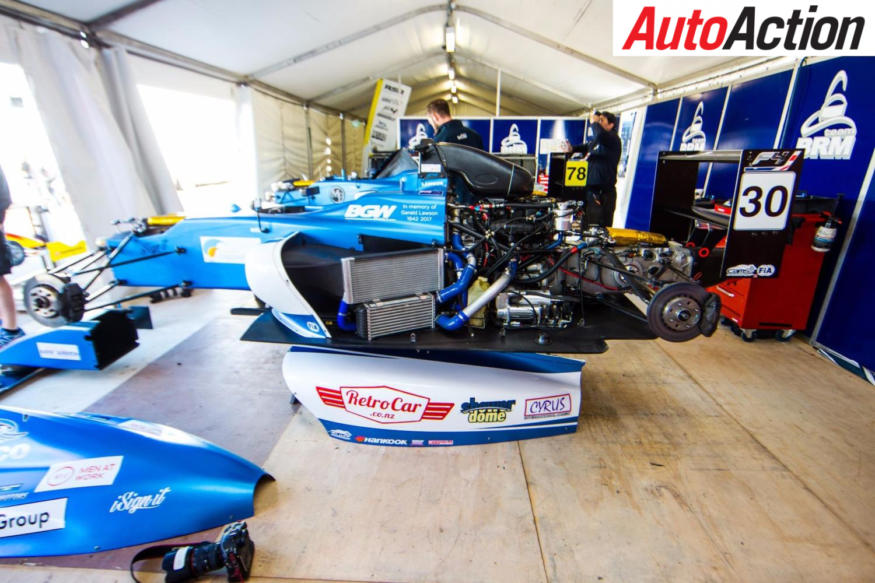
Australia’s Formula 4 run a Mygale chassis with a 1.6-litre Ford EcoBoost engine
What Australia ended up with was the Mygale with a 1.6-litre Ford EcoBoost, turbocharged four-cylinder engine, as found in cars like the Ford Fiesta, and in racing trim producing about 160hp. The cars run on Hankook tyres, and an identical model is run in the British series.
The Mygale M14-F4 is company’s first single-seater carbon fibre monocoque. The chassis is designed to meet the FIA F3 level safety requirements, and includes front and rear impact absorbing structures, anti-intrusion side panels, roll hoops, FIA head restraint system, wheel restraining cables, FIA safety seat and retractable steering wheel and column.
There are also variation in other markets that use the identical Mygale chassis. In Mexico, in what is now known as the NACAM series the same Mygale-EcoBoost combo is raced, but cars use Pirelli rubber. In Denmark and in South-east Asia, the cars are fitted with 2-litre Renault motors, but the Asian series runs on Hankook tyres and the Danes on Pirellis. In China the cars are fitted with 2-litre Geely engines and Kumho tyres. To date, more than 100 have been produced.
Other F4 series use a Tatuus chassis from Italy, which is in use in Italy, Germany/Austria/Netherlands, Russia/Spain/Portugal and the UAE; in Japan it’s a Dome and in the USA a car made by Crawford.

In the cockpit of the Australian Formula 4
Karl Reindler, the Australian Formula 4 Driving Standards Observer, says that the similarity of specification was a big part of the plan for F4.
“We needed a cost-effective championship to be the first stepping stone out of go-karts,” he said.
“We wanted to align ourselves with some of the other championships, and we knew that drivers from out Australian F4 championship would, hopefully, go overseas, and to compete in the British Championship was always the logical step. So to align our equipment with their equipment made a lot of sense.
“A driver has a much better chance of being comfortable and confident very early on, if he has the same Mygale chassis, on the same tyre, which is by Hankook, which I think is actually an F3 tyre. I think the tyres are very soft for the amount of power that these cars have, and I think that makes sense.
“It’s also the same motor as the British and Mexican championship, the Ford EcoBoost, 1.6-litre with turbo. The guys who are racing in the British championship and who have done this championship are all having like-for-like equipment; the same chassis, tyres, brake pad, the same package entirely, which we think will make that transition a lot easier.”
In the first half of 2015 20 cars arrived. There are now 19; the car in which Tom Grech hit the wall at the Gold Coast in the fifth round of the series has been deemed too badly damaged to continue. And despite the fact that 19 cars have not appeared at any single event, there are no ‘new’ cars sitting on the shelves on Walkinshaw Racing, waiting for a call to action. All 19 have raced, in order to keep mileages under control.
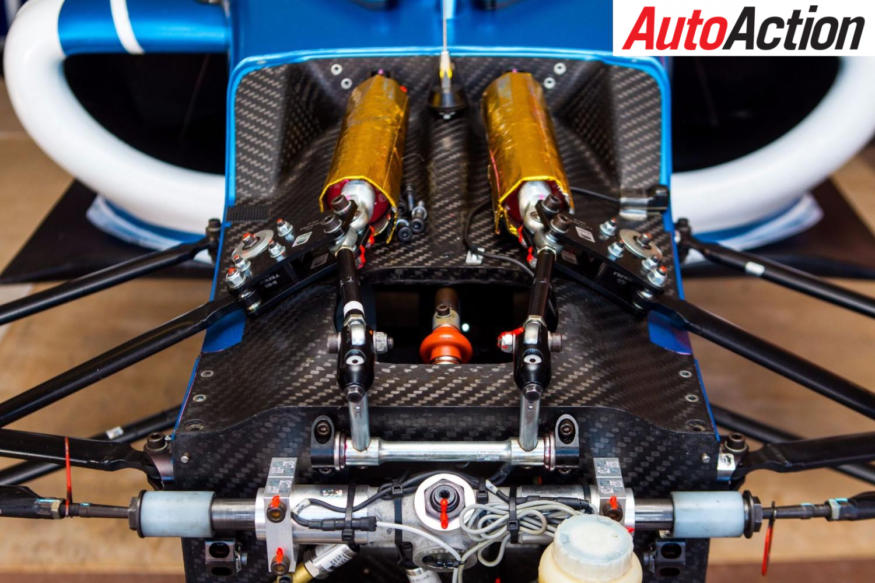
The front end suspension of a Formula 4
The suspension is simple – deliberately so, according to Reindler.
“There are three different springs, and the teams are very protective of their set-ups – but I guarantee that 90 percent of the cars on the grid will be running on the stiffest spring package, given that it is so over-tyred for the amount of tyre that it has got!
“It is basically, 600, 800 and a 1000 pound spring. Most of the cars will have the 1000 pounds in them at the moment. You are limited with choices, you don’t want to complicate it for these young kids it’s already difficult transitional out of karts, which is where most of these guys come from.
“When I stepped out of karts I raced F3 – I did a bit of Formula Ford. In F3 that is an open championship where if you wanted to have 100 different spring options, you could. You could run single or double, at the front or the rear – or triple, if you wanted. You have adjustable dampers in other categories, for both low-speed and high-speed, for bump and rebound, but this is very simplified.
“These are not adjustable. They are basically a road car damper, and they do a good job. But if there is one thing that I would introduce it would be a very simple adjustable damper, so they can get an understanding, as they develop their careers, of the fine-tuning of the cars. It’s all well talking about anti-roll bars and springs, the ‘macro’ part of the set-up. But it is the ‘micro’ part, the really fine adjustments, that is what these guys might be missing out on. But the other side of that is, that would be another expense.
“I know it’s been discussed but at the same time, we still want to align ourselves with all the championships. I don’t know if they are considering the same things in the UK or Mexico, or any of the other championships around the world. But I think it would be a good thing to have just very simple no high-speed low speed just a bump and rebound adjustment and that’d be an a nice little tool to these driver, to get confident making changes.”

Formula 4 uses Fiesta ST-based engines and six-speed sequential gearboxes
The Fiesta ST-based engines and six-speed sequential gearboxes are prepared in a pool, and dyno matched to ensure parity. At present the car uses a Hankook tyre, but the supply contract is coming to an end – CAMS recently advertised for Expressions on Interest for a new supply, to take effect for the 2018 season.
“With any tendering process after models for same survey three years cycle it goes out again,” says Reindler. “The Hankook has been great; it’s a really good tyre. It is quite a forgiving tyre to drive on. The feel it provides and it rewards grabbing the car by the scruff of the neck, especially on a green tyre. You still need finesse, but it is quite forgiving and guys straight out of karting can jump in and go fast straight out of the gate.”
Mygale has a very strong track record at producing quality cars, but that is not to say that there have been no problems with this one. One of the issues that was reported was that the car – which was built to high safety standards but with low cost in mind – had some examples display problems with the fixing of chassis bulkheads.
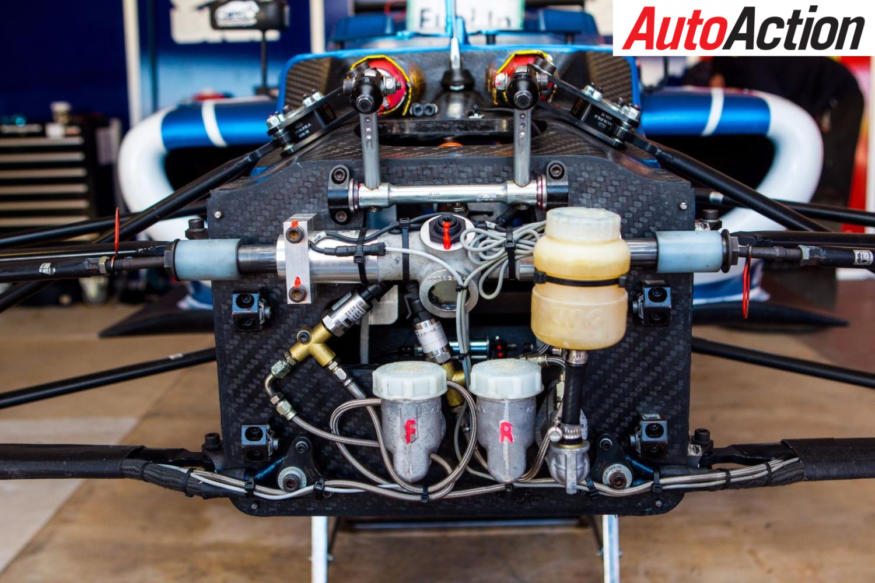
The front end of the Mygale Formula 4 chassis
Reindler did not avoid that issue.
“That was really early on, and the team that decided things, I have been aware of that but not deeply involved with it. There have been issues. When you build a car, cost and safety are the directives but any new car, and it does not matter what car it is, there are going to be issues. There were a couple of issues; hiccups with the gearbox, with [it] skipping gears, but nothing that we couldn’t get on to of.
“We have developed a strong relationship with Walkinshaw over the last couple of years and the cars have run fairly flawlessly these days. The Walkinshaw guys are always at the track and helping out.
“There was something with one of the cars, yesterday [at QR], but it turned out to be a maintenance issue with one of the parts. It was not an actual fault with the hardware, as such.”
One of the problems, according to Reindler, was the short time frame between announcing the new class and the arrival of the cars, in time for pre-season testing.
“The whole process was fast-tracked – I do not want to say ‘rushed’. The get the cars over here and up and running… in a perfect world there would have been a lot more running. I did a lot of the testing, we ran the car at Albury and we showcased the car at the Grand Prix. In a perfect world we would have had a lot more test days and we would have pushed the car to the limit, so that we were educated on what solutions might be needed before we handed the cars over.
“Because it was fast-tracked, those things were realised by the teams themselves and we have worked with them. We have a nearly-flawless car now, the only reason we see DNFs these days is when you see driver error.”
But without doubt the biggest change in the car is not the car itself, but the business model associated with the category. The original model was that CAMS provided the ownership element of the fleet – which was originally publicised as 25 cars – and that the hardware would be leased to the teams.

Under the skin of the Mygale Formula 4
That element is still available but the big difference now is that individuals also have the option to buy a car outright – as they might do with a Formula Ford, a Toyota 86 racer or nearly any other racecar.
In spite of the change, there has not been much movement in the number of cars that have been on the track. That remains at about a dozen.
“People always have an opinion about the business structure and since we made the change, the uptake has, probably, not been quite what we expected it to be,” says Reindler.
“We are providing options; whether you own the car or lease the car, there are pros and cons to both. It was probably time to address that after two years and CAMS has done that. The numbers are still fairly similar but the hardest part at the moment is educating the kids that this is the logical step.”
One largely unintended consequence of F4 has been a relative boom in the grid sizes in Formula Ford. Losing its national status, and nearly a total lack appearances on Supercars’ support program (though the cars did race at Winton for the first time in four years) has, along with things like a more affordable tyre deal from Yokohama, has led to bigger fields.
Some might see that as a blow for F4 but Reindler does not.
“Early on I think it got off on the wrong foot,” he says.
“Competing with Formula Ford… we never set out to compete with Formula Ford. I still think that Formula Ford has validity; I think it is a great car and is a great category in its own right. I am all for kids jumping in whatever vehicle they can get in, whatever is affordable. If Formula Ford is affordable, jump into that. If you can take the step into a Formula 4, step into one. The problem I see, and I see some of this from my role in driver development, is kids jumping into one thing and not being adaptable.”
“The fact that some like Will Brown, who raced in Formula 4, Toyota 86 and Formula Ford last year and who has jumped into the Development Series, and is doing a bloody good job, is great. He is a bit of a star.
“That is one of the things that kids need to work out; how to jump in a car and make it switch on, and make it go. Adaptability is all about that.
“There is no ‘them and us’ attitude. It’s about getting kids out there, though I would like to see a few more kinds on this [F4] grid. There are some kids racing in karts at the moment who would make a lot of sense for them to make that step, out of karting and into this [F4].”
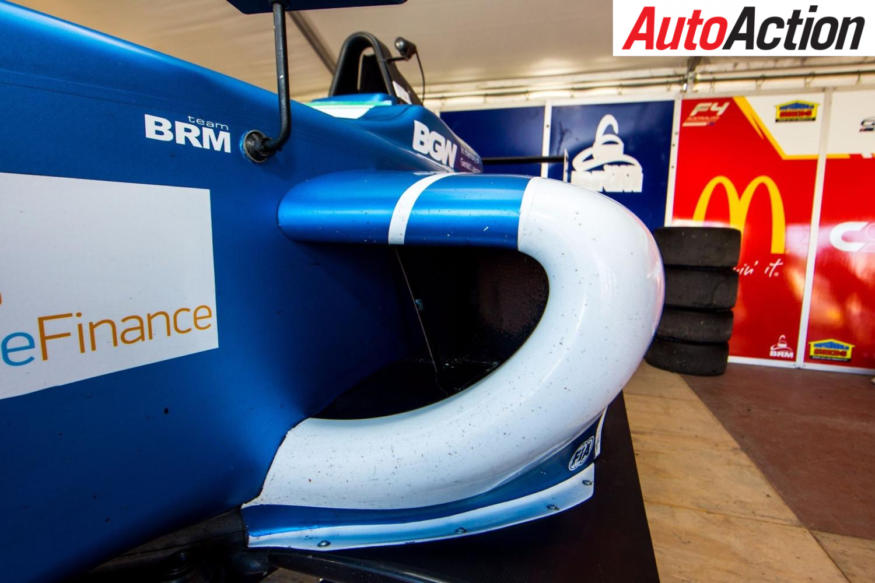
The current car will be racing for the next two seasons
The current car will be racing for the next two seasons, at least.
“With F4 the plan from the start was to do five years, it is probably a bit of a moving target, before there are any updates,” says Reindler.
“The life of the car is about five years. I think that the engines get overhauled after three years, you get good life out of those. In Formula 3, the cars were built on a three-year cycle, that was the time before you would need to update.
“And that ‘step’ (update) might be just an update – and aero update, perhaps updating the dampers to allow some adjustability. That is due to come in a few years’ time.”
AA sources in Europe report that a number of the makers involved in the international series, including Mygale, are in the process of planning a new generation F4 car for 2020-21.
And the $64,000 Question… now that individuals can own a car, how much will it cost?
“The cost of a car is $65,000, plus GST,” says Reindler.
“I think that makes it a bloody affordable racecar that is capable of lapping a circuit within a few seconds of the times of a Supercar. There is a high level of safety there as well, which provides value.
“The lease fee for the series is $25,000 for the season. The running costs largely depends on testing. The aim was to cap it at $165,000 for the season; there are probably teams that are charging more. Kids are spending more than that, if they want to do a lot of testing. If you factor in some damage, and a reasonable level of testing, it would be close to $200,000.
“I think that is incredibly reasonable, compared to other categories. If you want to do the Development series, you are looking at anything between $300,000 and $600,000. Carrera Cup is about $400,000 for a season. This is just throwing base figures around.
“If you want to go to Europe, talking to some of the kids who are over there at the moment, Formula Renault could cost $350,000 to $400,000 a year and that could be conservative.
“There are some kids out there who are spending more than $100,000 a year on karting. It is not that big a step up, to run a proper program in a legitimate open wheeler.”
So, has F4 been a success?
You could argue that it has. Drivers of the likes of Leeds, Tom Randle and Zane Goddard have gone on to race overseas, just as those who promoted the category had planned. At the same time, that has proven to be a double-edged sword; by its very nature F4 is designed to be a ‘graduate’ formula, in which young drivers stay for a relatively short time, meaning that there needs to be an influx of new drivers into the class every year.
But there have been errors along the way. CAMS seriously over-estimated the performance of the cars. Prior to that first event in Townsville CAMS’s own promotional material suggested a lap average speed of 144kmh, which would put the speeds of the cars firmly in V8 Supercar territory. What they got was 10kmh shy of that – and the cars were quite unspectacular to watch and hear.
There are also those who continue to criticise the formula, based on the level of investment that CAMS has had to make in the series, Or, based on the fact that teenagers, in cars with wings, racing on a street circuit with plenty of things to hit – and at the beck and call of Supercars unyielding timetable, which sees time-certain finishes and therefore, shortened races – is not what is needed for kids to gain experience.
But love it or hate it, for now, Formula 4 is here to stay. We better get used to it.
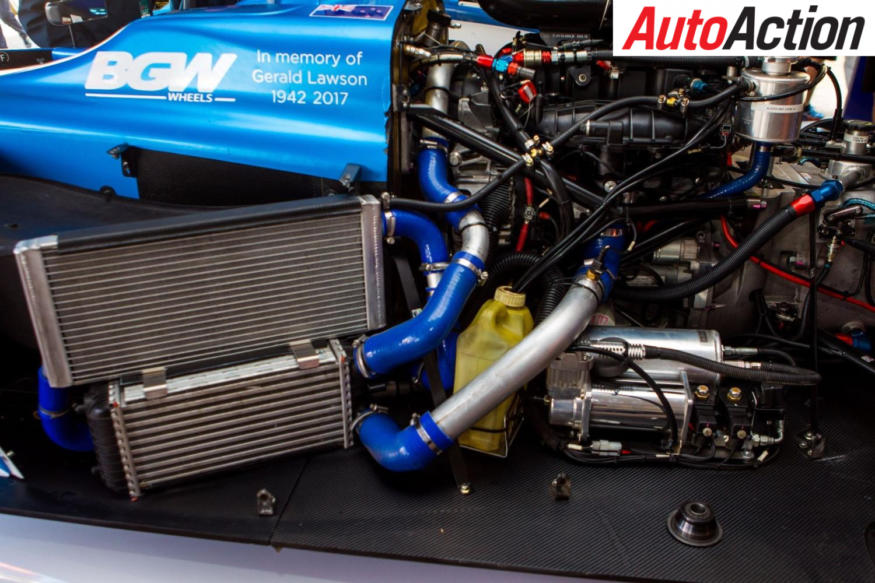
Tech specs of the Australian Formula 4
SPECS: Mygale M14 F4
Length: 4341mm
Height: 958mm
Ride Height F/R: 20mm/30mm
Wheelbase: 2742mm
Width F/R: 1725mm/1715mm
Track F/R: 1493.5mm/1430mm
Wing Width F/R: 1400mm/898mm
Gearbox: 6-speed sequential Sadev SL75-14 LW, with paddle shift
Ratios: First 14/37
Second 18/35
Third 18/28
Fourth 21/27 (Option 22/29)
Fifth 20/22 (Option 24/28)
Sixth 27/26 (Option 22/23)
Suspension: Double wishbones, twin non-adjustable dampers operated by pushrods, adjustable anti-roll bar
Data Acquisition: Steering Angle, F wheel speed, Acceleration in three axes, Brake Pressure (F and R), Gear indicator, Throttle pedal, Lap Timer
Dampers: Sachs, non-adjustable
Springs: Sachs, choice of 3 F/3 R
Fuel Cell: Premier, 48 litre capacity
Brakes: Brembo discs and calipers
Brake Pads: Ferodo
Safety: To FIA standards: front and rear impact absorbing structures, anti-intrusion side panels, roll hoops, removable seat, head restraint, wheel restraint cables, onboard fire extinguisher (OMP), retractable steering wheel and column (Titan).
Wheels: Team Dynamics, 13 inch
F width 8 inches
R width 13 inches
By PHIL BRANAGAN
Article originally published in Issue 1716 of Auto Action.
For our latest Under The Skin feature pick up the next issue of Auto Action Magazine, on sale this week. In the meantime follow us on social media Facebook, Twitter, Instagram or sign up for our weekly email newsletter for all the latest updates.


